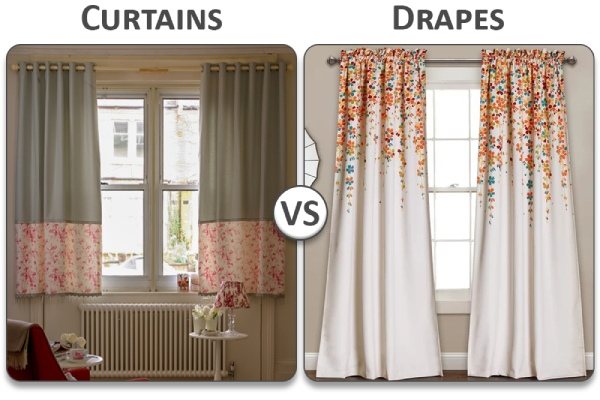What is your favorite type of window treatment? When we talk about window treatment, there are many factors to think about between drapes vs. curtains, shades, and blinds. Many people use they are the same, especially curtains and drapes. But that’s not the case. While all four window treatment options are used to decorate rooms, they all have unique characteristics.
Here are some similarities and differences between drapes, curtains, shades, and blinds that will allow you to make the right selection for your house.
Difference between drapes and curtains
Curtains are normally fabric panels that we use to cover windows and are normally cut to fit a window or drop a few centimeters below it. Drapers are also fabric panels but they are normally made from thicker fabrics and cut to the length of the floor or slightly puddle on the floor.
If your space requires room darkening or insulation qualities or some formal space, drapes could be the best choice. But if you want to give your room a lighter touch or decorative element, we suggest you pick curtains.
Blackout curtains are specially designed from a layer of specific materials that block light. Meanwhile, drapes can be made from different varieties or multiple layers of heavier fabrics. Drapes often do the work of blackout curtains.
Also, Read Affordable Design Ideas for Small Bathroom
How to choose between drapes, curtains, shades and blinds
-
Curtains
As mentioned above, curtains are fabric panels that are normally sold or hung in pairs. Curtains can be of a wide variety of widths, lengths, fabrics, colors, and patterns. They are great for any type of room, including your loving room as they are nice for sliding glass doors. These curtains can soften a space and add color and texture to it.
We hang curtains from a rod which can be plain or decorative. You can find fabric pockets sewn at the top of some curtains that slip over the rod and hide it when closed. Meanwhile, other curtains have metal grommets or fabric tabs sewn at the top to slide over the rod. There are also rings or hooks clipped to the top of curtains that attach them to the rod.
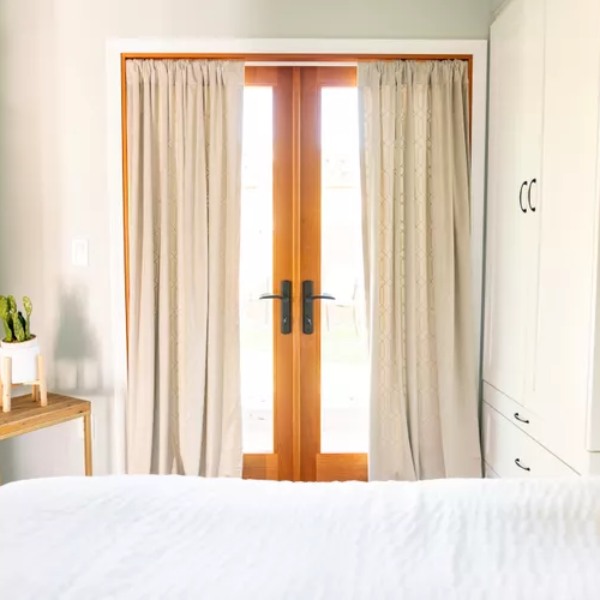
There are some sheer curtains and their fabrics offer minimal light blocking and privacy. For instance, you might have seen the short, sheer curtains that cover only the bottom half of a window over a kitchen sink. Other curtains are made of heavier materials and are normally called blackout curtains as they block most of the external light. Many people also use curtains in conjunction with blinds or shades for optimal light blocking mainly in bedrooms.
2. Drapes
Contrary to curtains, drapes are often lined with heavier fabric to block all the external light. These are mostly the best for bedrooms. Drapes are mostly highly decorative window treatments, often customized for specific windows. Just like curtains, drapes also offer privacy and make your room visually appealing. The visible fabrics of drapes are normally heavy and a bit stiff. The most common materials that makeup drapes are velvet, damask, and silk.
Drape panels are mostly sold in pairs as window treatments and just like curtains, drapes hang from a rod on rings, hooks, grommets, or via a fabric sleeve. You can choose any color of fabric or pattern to suit your tastes though most drapes are solid or textured. The heaviness of the drapes gives off a formal look as the top layer is often pleated.
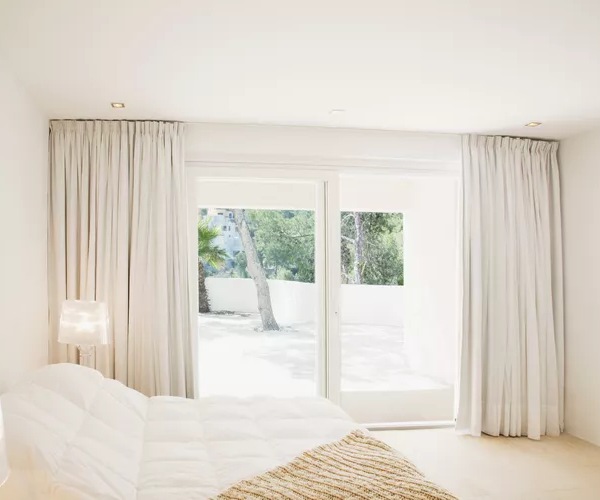
Also called draperies, these window covers normally reach from slightly above the window to the floor. They even can puddle a bit on the floor. That said, it doesn’t necessarily mean that drapes have to touch the floor and that is a personal choice.
3. Shades
Shades, typically sold individually, come in different types of fabric including materials like vinyl and bamboo. They are great for any type of room. They are attached to a rod or frame and their sizes fit within the window frame, unlike drapes or curtains which hang below the sill. If you want to let the light in, you have to raise the shade using either a cord, roller, or lifting mechanism. As you lift the shade, it either bunches or rolls around a rod, depending on the shade’s style.
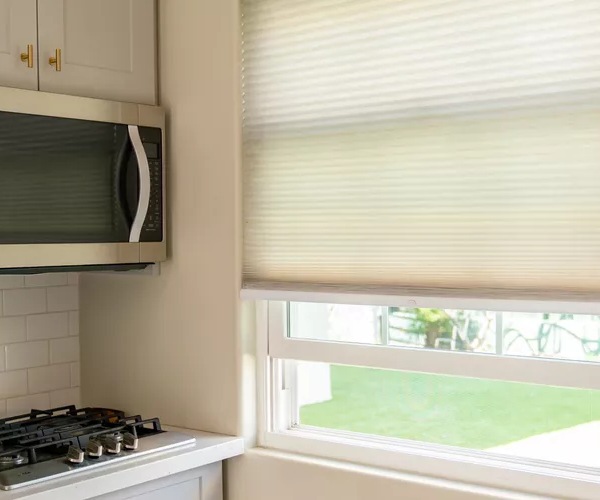
Simple roller shades are not pricey and as the name reads, the material rolls around a rod at the top of it. Another popular type of shade is Roman shades which makes deep pleats when pulled up. The other one is balloon shades which pouf into balloons of fabric and tie-up shades which fasten using a fabric tie to hold them open. You can choose any decorating theme that complements your window shade from formal to casual.
While window shades are good on their own, many people also use them underneath curtains or topped with a valance. This gives proper light-blocking abilities. That being said, shades alone can work as a good blackout window treatment if they are made of a thick, lined fabric.
4. Blinds
Blinds are made up of slats, also called louvers, that tilt open to let light in or close for privacy or lights out. They can be versatile for any room, from the living room to the kitchen. You don’t have to completely raise blinds to see through them, unlike shades. You can simply tilt them open.
Average depths for blind slats are 1/2 inch, 1 inch, or 2 inches—the latter of which are often known as Venetian blinds. The length and width of the blinds are designed to fit within the window frame. Blinds with horizontal slats are very common but some blinds have hanging vertical slats. They are normally used on sliding patio doors or over large sliding windows.
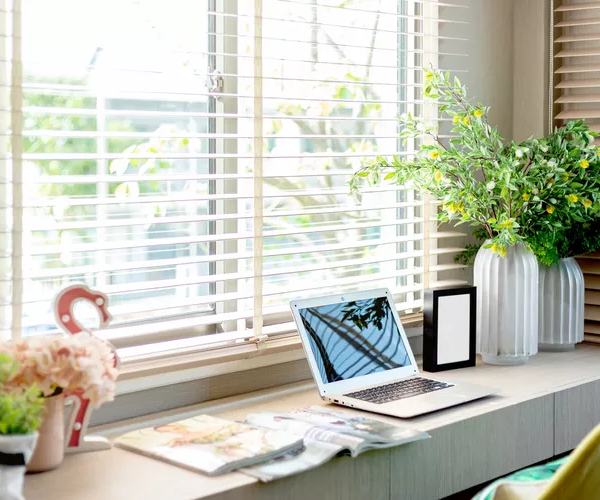
Some light may peep in through the cracks between slats and around the edges. Despite that, blinds are suitable for bedrooms and you can add curtains to block further light.
Blinds can be purchased in many colors and wood tones, but they are not normally patterned. Curtains or a valance with give their rigid appearance a soft look and make it look visually appealing.
Things to consider when choosing a window treatment
- Light filtration: Are you someone who wants your room to be completely blacked out for sleeping or do you like having some light seeping through? It solely depends on your preference whether you should get a curtain that allows more light in the room or drapes that can darken the room.
- Features: Consider the features that you want. You can choose electric blinds, for example, that operate automatically, or consider shades with a flame retardant material for safety precautions.
- Header Type: There are many header types to think of. Do some research and pick the best one as per your design aesthetic and budget. For example, you can choose pleats, grommets, a rod pocket, eyelets, and more.
- Cost: Cost can vary from very budget-friendly to very expensive depending on the quality, material, header type, and fabric requirement. For example, basic vinyl blinds are normally some of the inexpensive window treatments. Wooden shutters or drapes made of luxury fabric, on the other hand, can be the most expensive.
- Style: If you want your home’s design to think which window treatment will best fit, this might work for you. Along with aesthetics, you will also want to think about function. While shorter windows will do better with shade blinds whole floor-to-ceiling windows lend themselves to curtains or drapes.
FAQs
Q: What is the main difference between curtains and drapes?
A: The main difference between curtains and drapes is that curtains are generally shorter and lighter than drapes. Curtains are used for privacy and to make your windows look more aesthetically pleasing, while drapes are used for room darkening.
Q: What are the disadvantages of drapes?
A: There are a few disadvantages of drapes. Not only can heavy drapes reduce airflow, but they may also accumulate allergens and mold. They are difficult to clean and can also be pricey.
Q: Are drapes outdated?
A: Drapes as a whole are classic design staples that never go out of style. However, certain trends and styles come and go when it comes to modern popularity.
Layering, like combining drapes with shades, is a popular approach to window treatments today.
Q: How high should drapes be off the floor?
A: It’s often advised that drapes should hover just above (or about an inch above) the floor. Drapes can also puddle on the floor, but this can cause them to drag on the floor when you maneuver them and pose a tripping hazard.
Also, Read 15 Essential Bedroom Items for Ultimate Comfort
